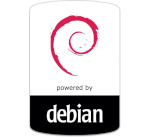
It seems, the ways people behave and produce things are changing radically last years.
From the methods of “know-how”, being dominated in the world during last centuries, manufacturers are evidently shifting towards other schemes of technological sequences and labour cooperation.
One of them is an "Open Source" method.
Unlike their predecessors, some authors of new ideas today are not hiding them (ideas) under the hood. They open their design and specifications to the public, hoping to find competent professionals in the Net, who could help to elaborate and implement those ideas.
Despite the fact that both the term "open source" and the trend to use it, have appeared in IT field at the early 90s and were related initially to software development primarily, those ideas conquer new and new fields of human activities today.
Obviously, software development is the main field of open source usage, taking into consideration GNU/Linux, FreeBSD, Apache, PostgreSQL and numerous, if not to say "uncountable" other software projects. But we may see the penetration of "openness" ideas in other IT branches – web design, for example (see oswd.org), or social software.
There are some critics of open source software (OSS), but even those, who criticize open source may not argue its evident accomplishments in the modern world during last two decades.
More and more businesses use OSS in their practice and quantity of users shifting from proprietary to free and open-source software grows every day, too.
Even many countries come to open source software in governmental institutions: Government-mandates-preference-for-open-source, opensourceforamerica.org.
One of the last examples is Iceland: Public Administrations move towars Open Source.
But not only software uses open source model.
Beginning from architecture, open-source intelligence (OSINT), ecology or hardware manufacturing – the geography of open-source is widening day by day.
Here is a definition of the term "open source" from designspark wesite:
Open source is a way of providing free access to hardware designs, source code and the accompanying documentation, and provides a framework for collaborating on projects.
One of the most astonishing examples may be seen here, for instance: link on dezeen.com.
Yet several years ago those interested in 3D printing were stopped by big prices on tools, necessary for that. But situation has all changed:
Suddenly designers have got access to machinery they never could have had when I started out,” Dixon added. “The programs you use to design things and the programmes these machines use to stamp and fold things are very similar now. Previously the tooling would have cost £100,000 or £200,000; now it costs £500, £1000. And they’re quite generic so they can do different things.
Then, the ideas of "open design" become more and more popular among manufacturers.
Also interesting, that from the beginning of modern medicine (seems from 19th Century) surgery, therapy, etc use "open source" principle, too.
Any new surgical or therapeutic (gynecologic, ophthalmologic, etc) method of curing (operating) patients were and are published in special journals for wide professional public.
It gives the possibility to other medical doctors freely use that method, as well as to improve it and share successful results of such improvements with their colleagues, too.
Now, it looks like the situation in healthcare is transforming even much more towards expanding medical information sharing:
...an open system of knowledge with researchers, practicing clinicians, patients, their families and communities all involved in capturing, refining and utilising a common body of knowledge in real time.
( link )
There are even people and organizations, who teach how to use open-source method in your life ( this link or that link ). Future of that method looks very promising, indeed.

